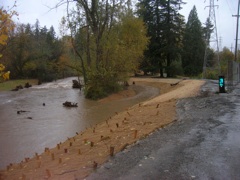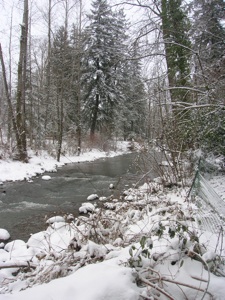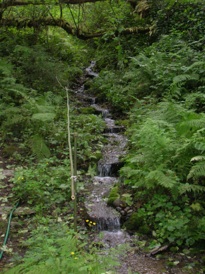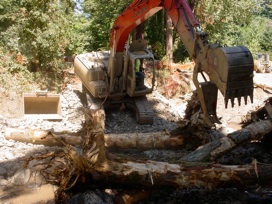Steven Reed Johnson
Portland, Oregon USA

My Place on Earth
Beavergate












Communities, and social and political institutions, have cultural stories that dictate behavior. While actions of citizens, public servants, or private and nonprofit institutions, are dictated by specific rules and regulations, transformative change happens at a narrative level. To effect long term change in social and political habits and policies, the community narrative needs to be emended. The story that became known as Beavergate, a story from the Johnson Creek Watershed in Portland, Oregon, illustrates this process. Up until the 1990s the story of Johnson creek was one of neglect. The creek was badly polluted and flooded often. Most people would have wanted to euphonize the creek, bury it in underground tubes and forget it. Beginning in the mid-1880s citizens and nonprofit and agency staff begin to change the story toward one of repair and rehabilitation, and toward thinking of the creek as a community amenity not a nuisance.
In the fall of 2000, an engineer, working to shore up a sewer trunk line that passes through the creek in a natural area of the stream, decided on his own to move heavy equipment downstream to remove a beaver dam. When the nearby residents, including myself, found out about the incident, we reported it the Bureau of Environmental Services (BES), the bureau charged with urban stream and storm water systems management. The resident beaver family and its dam were a source of pride in the neighborhood, and a site used for environmental education programs.
What was most extraordinary about the event was how the story spread. We only made a few telephone calls. While upset and firm, we were hardly belligerent. Within days, the story was picked up by the largest daily and largest weekly newspapers, two radio stations and TV news. The City Commissioner in charge of BES made a public apology. When I walked into a coffee shop several miles from the incident, a barista announced, “look it’s the beaver guy.”
A summit was convened at the site of the destroyed dam, attended by no less than 25 people representing eight local, state, and federal agencies. I wondered if the beavers might still be around, lurking in the stream, amazed by the commotion they had created. The rogue engineer and his cronies were bewildered. In the past, as one remarked to me, people would have thanked them for removing a nuisance. In the end the rogue engineer was released. I begin to think of it as Watergate like when I received anonomous telephone calls with directives about where to find damning information about the rogue enginner. Several weeks later City staff, including the Bureau director returned to the stream to clean up the channel debris and remove “non-native” rock that had also been placed by the engineer and his crew.
The incident also spurred a large scale restoration project that was completed in 2007. The sewer line was reburied and tons of wood debris and large boulders were added to the stream, and the floodplain increased in size to accommodate annual flooding.
Then just a year ago I was reminded again of the story and its lasting impression when I engaged in a dialogue with two City surveyors on the road in front of my house (a mile or so from the site). After they told me what they were doing, one looked at me and enquired, “Are you the beaver guy?” I confessed my identity and then was told, “We always wondered what you might have to do to get fired from the city.” I told them to keep passing the story around. I imagined how the story was conveyed inside city government, across to another bureau, and beyond. I knew stories like these make up the culture of the institution. As the story gets past from bureau to bureau, from one worker to another, and one generation to the next, it informally dictates choices made in the field. It will probably be a long time, if ever, before a beaver dam is removed from the stream.
If the Johnson creek narrative was still embedded in the past, when the stream was considered to be a liability, something to overcome, and not as an asset; if there were no "eyes on the stream," and an embedded stewardship ethic in the watershed, as well as in the bureaucratic culture of local government, the beaver incident would have passed without much notice; the beavers would have been displaced or relocated like a slum dweller. Instead the beavers now co-exist within a restored and relatively natural reach of the stream.





Olava Springs near the Beaver Dam
Repairing the Stream after Beavergate
The new Floodplain
After restoration: Quiet of the first winter
A beaver, not the magical
White Beaver
